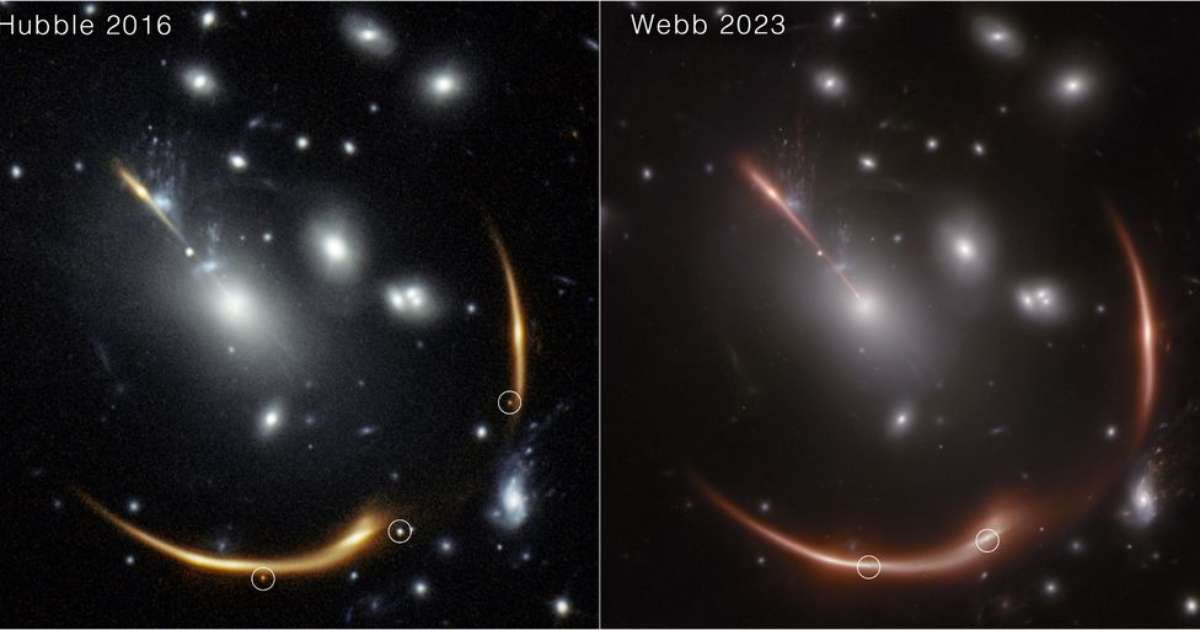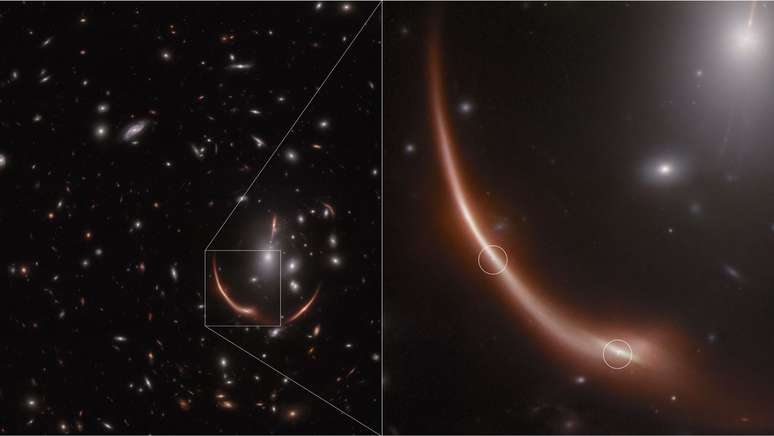A supernova multiplied by gravitational lensing could solve the problem of the universe's expansion rate, but only when its final images arrive in 2035.
December 27th
2023
– 11:14 am
(Updated at 11:26 a.m.)
The James Webb Telescope found… Supernova That can be solved Hubble effortThat is, determining the rate of expansion of the universe once and for all. However, we will have to wait for the light, which will only reach Earth in 2035.
located in MRG-M0138It is a galaxy 10 billion light-years away from Earth. The supernova belongs to class Ia, meaning it is something known as a catastrophic variable star, the result of the explosion of a white dwarf.
The discovery was only possible because the light from the galaxy MRG-M0138 was amplified by gravitational lensing, formed by a cluster of galaxies about 4 billion light-years away.
Gravitational lensing occurs when a very massive object (such as galaxy clusters) is placed between Earth and a background light source (such as distant galaxies). The light from this source is then “forced” to follow a distorted path through the massive object and ends up being magnified – just as when we look through a magnifying glass.
In the case of MRG-M0138, its image is magnified by the lens formed by the J0138.0-2155MRG-M0138 assembly. This phenomenon also led to the quintupling of this image and the discovery of a Type Ia supernova called Mass, in 2016, by the Hubble Telescope.
Now, the James Webb Telescope has discovered a second supernova in this same galaxy, nicknamed “Encore.” This makes MRG-M0138 the most distant galaxy ever seen with two Type Ia supernovae, as well as putting it in the spotlight by cosmologists. Reason: The two objects can help determine the Hubble constant.
One of the biggest problems in modern astronomy is the Hubble constant, the number that describes the universe's accelerating expansion rate. Astronomers have not yet been able to precisely define the constant because different measurement methods – all of which are theoretically correct – get different results.
According to the researchers involved in the discovery of Encore, multiple images of the same object formed by gravitational lensing could be crucial in resolving the Hubble constant. It's just that supernovae have record maximum brightness, which in turn reveals their exact distances.
The authors compare the technique of observing a supernova using gravitational lensing to “several trains leaving the station at the same time, all traveling at the same speed and heading to the same location. Each train follows a different route, due to differences in journey time.” On land, trains do not reach their destination at the same time.”
They add: “Similarly, images of gravitationally lensed supernovas appear to astronomers over the course of days, weeks, or even years. By measuring the differences in the times at which images of supernovas appear, we can measure the history of the expansion rate of the universe.”
Because such supernovae imaged by gravitational lensing are extremely rare (less than a dozen have been discovered so far), this technique cannot yet be used to determine the Hubble constant. However, a new discovery could change this story, as there are now two supernovae in the galaxy five times larger.
The problem is that although multiple images of supernovas are indeed obtained, one of the light paths (or train lines, in the analogy above) may be much longer. The reason is that group J0138.0-2155MRG-M0138 contains a large amount of Dark matterIts attraction also forms one of these multiple paths.
The prediction is that light taking this longer path will only arrive in the 2030s, if the model for the distribution of dark matter in J0138.0-2155MRG-M0138 is correct. “Infrared observations around 2035 will show the last gasp [do brilho das supernovas] “It will provide a new and precise measurement of the Hubble constant,” the authors said.
source: STScI
Popular on Canaltech:

“Coffee trailblazer. Social media ninja. Unapologetic web guru. Friendly music fan. Alcohol fanatic.”




